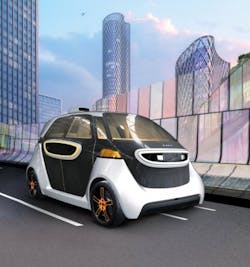The year past was one of enormous change. One obvious change was a profound social shift that elected a very different type of politician to the US presidency. Many felt that this would have as great an effect on technology businesses as it has had on society. The truth is, that didn’t happen (Net Neutrality notwithstanding).
The pace of technology transcends any political force and in 2017 that pace has brought us to a very interesting 2018; the beginning of the convolution of technologies into real, lasting and profound social change.
As I sat down to write this I imagined that I would write about upcoming trends to watch. Things like:
- Qualcomm eschewing the 7nm process for 10nm in its latest Snapdragon
- Google selling the “VisionBonnet” (Neural network accelerator for Raspberry Pi)
- A recent study showing that children under eight years old do not experience the “Uncanny Valley” when interacting with humanoid robots
- The rise of wearables like the Levi’s/Google “Jacquard”
But as I thought about it, while these are both interesting and important developments, what strikes me as more important is how past technology developments are coalescing and therein lies something really interesting.
Over 20 years ago James Burke wrote a fascinating book: The Pinball Effect: How Renaissance Gardens made the Carburetor possible – and other Journeys through Knowledge. (I highly recommend this little gem; it is fascinating). In the book, Burke puts forward the following notion; Knowledge, it turns out, has many unforeseen and surprising effects. In other words; what we learn (and by extension what we develop) connects with other knowledge (and other developments) in ways we cannot imagine, but in retrospect seem perfectly obvious.
Coming together
With that in mind, here’s what I see as coming together in 2018 - autonomous vehicles. Yep, pretty obvious, huh? The “why” behind this “coming together” is what fascinates me, though.
First there is the rise of electric propulsion (enabled by better batteries, by the way). Volvo to go all electric, Mercedes, Audi, even Jaguar investing billions in it. China going all-in on electrics, cities like London and Los Angeles proposing bans (within this decade!) of fossil-fueled vehicles on city streets. Electric propulsion is here: deal with it. Why is this important to autonomy? Electric vehicles allow (indeed demand) electric actuators - in other words, drive-by-wire (DBW) . From there, it’s a waterfall of technology.
DBW demands (and embraces) computer control; computer control provides simple interfaces to electronic sensors that in turn provide situational awareness data directly to the DBW processor. To be effective at autonomy, these processors require advanced “thinking” – artificial intelligence (AI) (which just so happens to be developing for the Internet of Things – IOT - anyway). AI requires advanced processing (which just so happens to be developing for things like gaming, augmented reality (AR) and content streaming. Finally, the autonomy of a large number of vehicles (particularly when mixed with “piloted” vehicles) will require networking - and, what do you know, here to enable that is 5G cellular (needed to fulfill our never-relenting thrust for more Snapchat, Twitter, Facebook, Skype and cat video entertainment).
Obvious, huh?
Fits and starts
One further prediction, however, is the enormous complexity of autonomous operations. So; progress in the area will not be without fits and starts. In 2018, we will see many attempts at autonomous vehicles but we will not see true “level 5” autonomy (where no human intervention will ever be needed), done successfully. Still all the “hooks” to do this will be in-place on vehicles. Indeed, even my 2017 Chevrolet Volt (a modestly priced (mostly) electric vehicle) has lane-keeping, adaptive cruise control, obstacle alerting and auto parking (and is 4G LTE connected at all times) that all work together (truly) seamlessly. (However, I still must drive the car).
As these systems become more ubiquitous, the network becomes more established and situational understanding at a processing level deepens, level 5 will come. When it does, real social change will follow and the automobile business will never be the same. Watch this space.
The question arises, however: how do these developments in the commercial market relate to the military?
The US military recognizes the value of commercial development in the area of autonomy and indeed TARDEC (Tank Automotive Research, Development and Engineering Command) has a very active program developing robotic vehicle technology for military use. They see the benefit of both electric vehicles and autonomous technologies in the role of logistics support - but recognize the current state of development to be somewhat short of full autonomous (as in “level 5”) operation.
Consider that, in military operations, vehicles cannot count on controlled environments (street signs, lane markers, traffic lights or even paved surfaces) so there is a need for a higher level of situational understanding there. Even in airborne applications such as Global Hawk and Predator, navigation and operation is never disconnected from human control. As in commercial vehicles, however, as the in-feed technologies become more competent, autonomy will come.
About the Author

